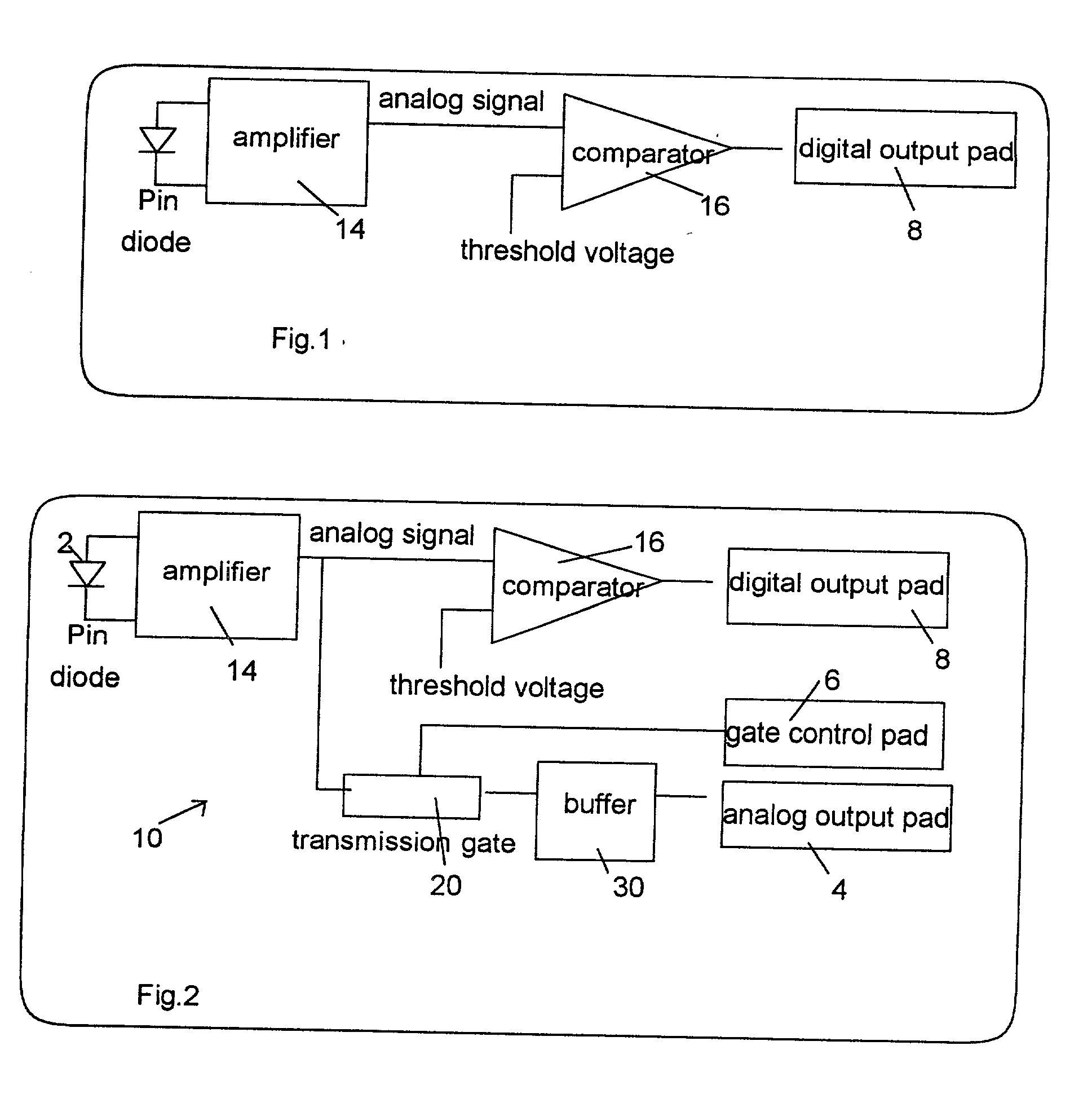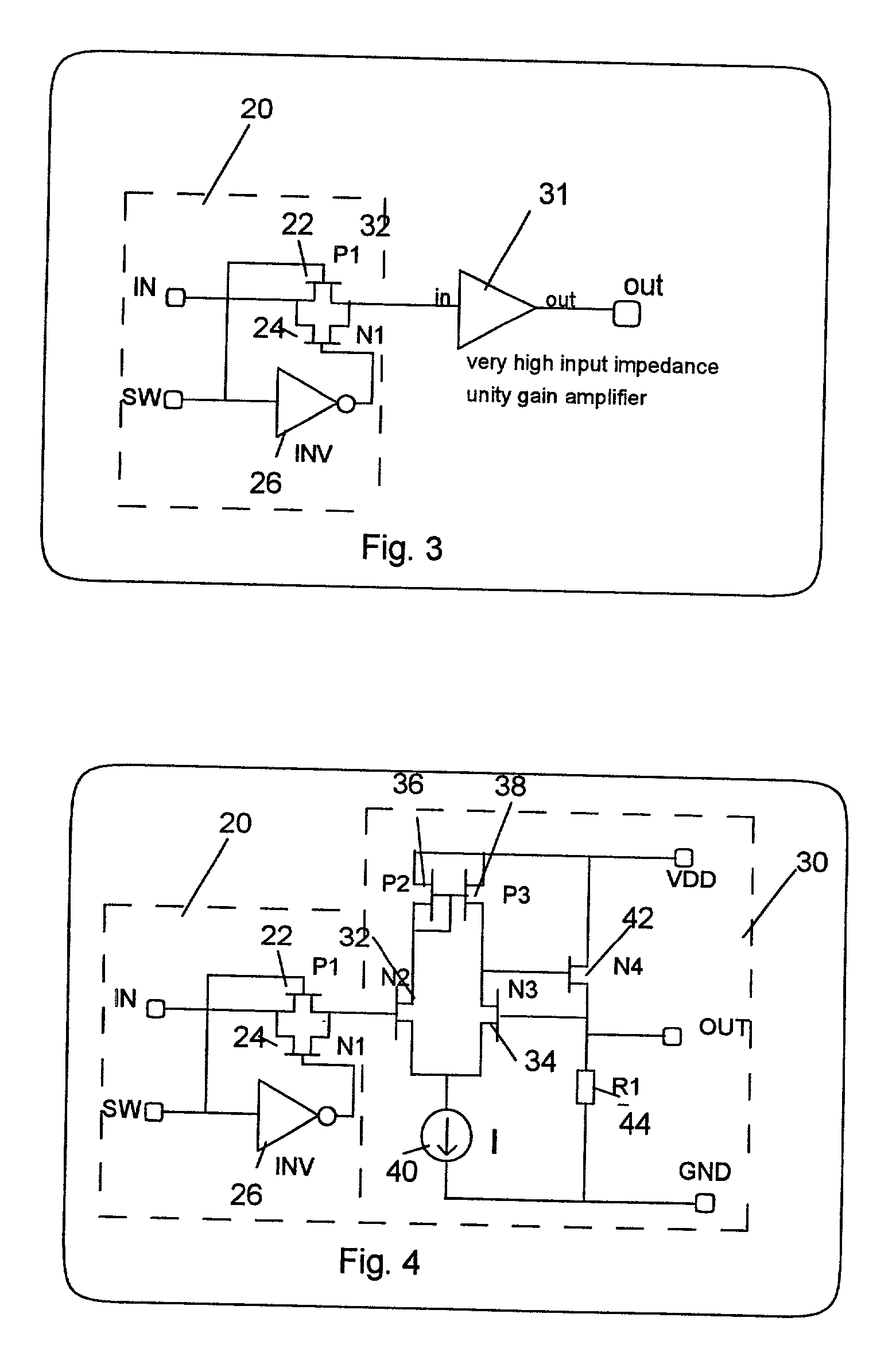Device for opto-electrical acquisition of shapes by axial illumination
a technology of axial illumination and optical acquisition, applied in the field of transceivers, can solve the problems of inaccessibility and untestability of parameters, difficulty in applying digital signal processing (dsp) technology to ir communication in this conventional ir transceiver receiving chain, transceiver is incapable of providing an analog signal without risking the disruption of the operation of the receiver chain,
- Summary
- Abstract
- Description
- Claims
- Application Information
AI Technical Summary
Benefits of technology
Problems solved by technology
Method used
Image
Examples
Embodiment Construction
[0026] Turning now to the drawings and more specifically to FIGS. 2-4, a preferred embodiment of the present invention will be described.
[0027] FIG. 2 illustrates a receiver chain 10 in a photoelectric transceiver according to the invention. A photodiode such as a PIN diode 2 generates an electrical current proportional to the optical energy of an infrared optical signal received by the PIN diode 2. A conventional amplifier 14 converts the electric current to voltage and magnifies the voltage, which is output to comparator 16. A reference voltage at a selected threshold level is applied to the reference input of the comparator 16. When the analog output signal of the amplifier 14 exceeds the reference voltage, the comparator 16 emits a digital pulse for the duration of the interval during which the analog output signal of the amplifier 14 exceeds the reference voltage, which is transmitted to a digital device (not shown) through digital output pad 8. At all other times, the comparat...
PUM
 Login to View More
Login to View More Abstract
Description
Claims
Application Information
 Login to View More
Login to View More - R&D
- Intellectual Property
- Life Sciences
- Materials
- Tech Scout
- Unparalleled Data Quality
- Higher Quality Content
- 60% Fewer Hallucinations
Browse by: Latest US Patents, China's latest patents, Technical Efficacy Thesaurus, Application Domain, Technology Topic, Popular Technical Reports.
© 2025 PatSnap. All rights reserved.Legal|Privacy policy|Modern Slavery Act Transparency Statement|Sitemap|About US| Contact US: help@patsnap.com



